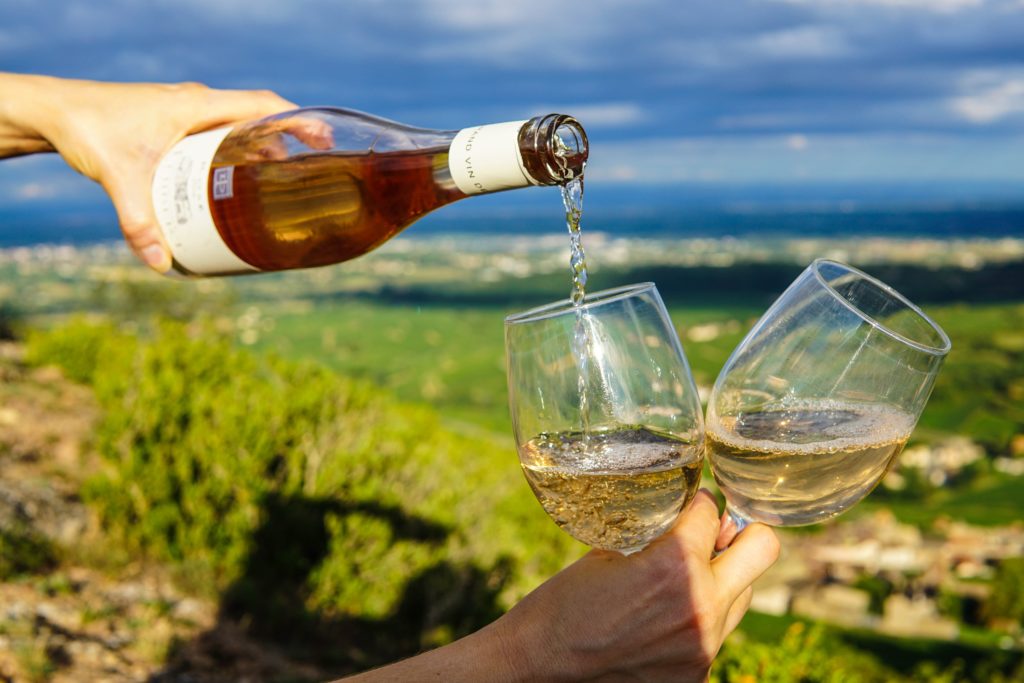White Wine Pairing
Episode #10 of the course Introduction to red and white wine by Paul Kalemkiarian
In our previous lesson, we looked at white wine in the glass. Today, for our final lesson, we’re going to pair white wines with food.
White wines are so versatile nowadays that there are very few dishes they cannot successfully accompany. In Hong Kong, for example, homesick Frenchmen have discovered that the wines of Alsace are possibly the only ones to drink with Chinese food—the spicy flavors of the wine stand alongside those of the food and complement rather than compete with them. Indeed, it is quite possible to drink a selection of different wines with a meal without once tasting the fruit of a black grape.
The key, as always, is to choose wines that will balance well with the dishes going alongside them. This is often more difficult to judge with white wines than red. An unexpectedly sweet white wine may do more harm to the flavor of a subtly flavored sauce than a surprisingly fruity or tannic red. By the same token, a delicately flavored dry white may be completely overpowered by a plate of aromatic shellfish.
The two factors to consider when pairing white wines with food are 1) the “weight” of the wine and 2) the acidity or sweetness.
White wines with good, refreshing acidity—as found in the Sauvignons of the Loire and Bordeaux, in crisp Chablis, Portugal’s Vinho Verde, and in the drier wines of Germany and Northern Italy—will be the ones to set against flavorsome seafood (e.g., oysters) and creamy, rich sauces. Fuller, heavier wines—such as the Chardonnays of Burgundy, Australia, and California, the bigger wines of Germany, and the traditional styles of Southern Europe, like Rioja and Dão—are probably better suited to white-meat dishes (foods that might go equally well with a light red wine). Some really full white wines go deliciously with cheese at the end of a meal.
The spicier varieties of Alsace and Austrian Grüner Veltliner are ideal with spicier food. They won’t stand up to a curry—no wine will—but they will combine their flavors interestingly with many dishes whose dominant note is an herb or a spice.
One word of warning: Unless you are trying to persuade your guests that an undrinkable white wine is worth putting past their lips, don’t overdo the chilling. Two hours in an average refrigerator is generally quite enough for any but the warmest bottle of wine. More than that, and you knock the flavor on its head very effectively.
Don’t overfill the glasses—little often works best. The wine will stay cooler in the bottle than once it has been poured. And there is no point, generally, in opening a white wine in advance of a meal, nor of decanting it. White wines are more fragile than reds, and an old one may suffer from too much contact with the air.
Finally, don’t worry too much about glasses. Green-stemmed glasses may be pretty for Mosel, but the standard tasting glass or any other kind that is smaller at the rim than in the bowl will do just as well.
I’ve had great fun sharing my passion for wine with you. I hope that equipped with your new knowledge, you’ll continue your study. Wine is such a rewarding subject. It’s an experience you can enjoy for yourself, as well as share with your loved ones throughout your life. (Don’t you want to be the one who brought that great bottle to the holiday party?) I encourage you to be curious and adventurous. The best teacher is experience and your palate is waiting. There’s a whole world of wine for you to discover. My advice is to get out there and savor it.
Salud,
PK
Another course by Paul Kalemkiarian
The Ultimate Beginner’s Guide to Wine
Recommended book
The Oxford Companion to Wine by Jancis Robinson
Share with friends

